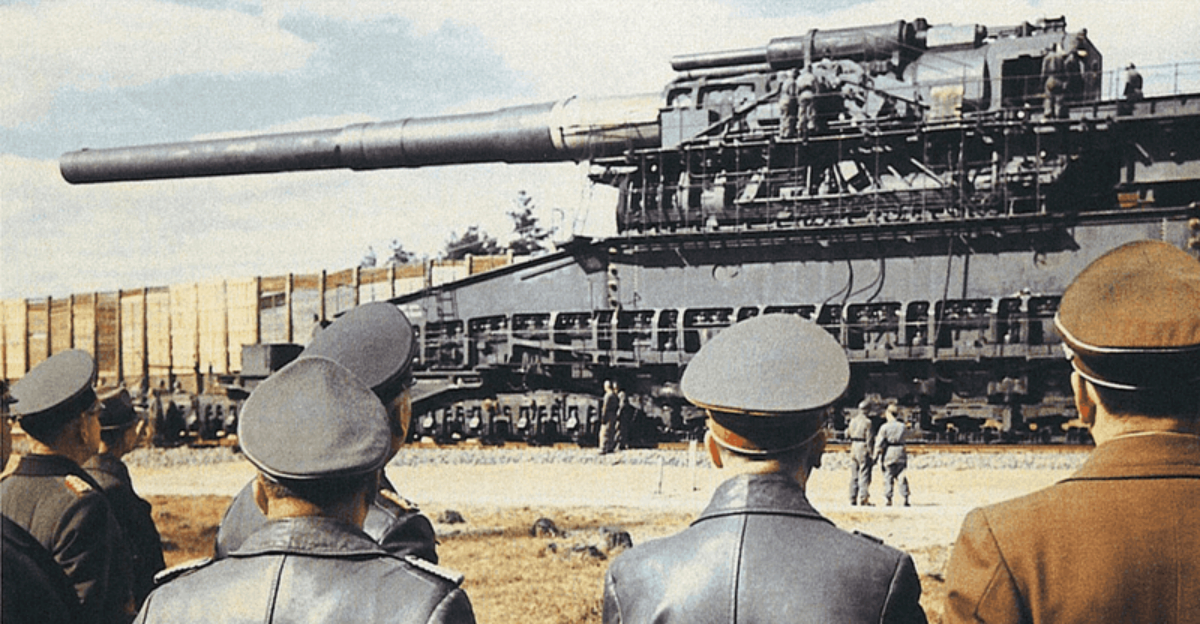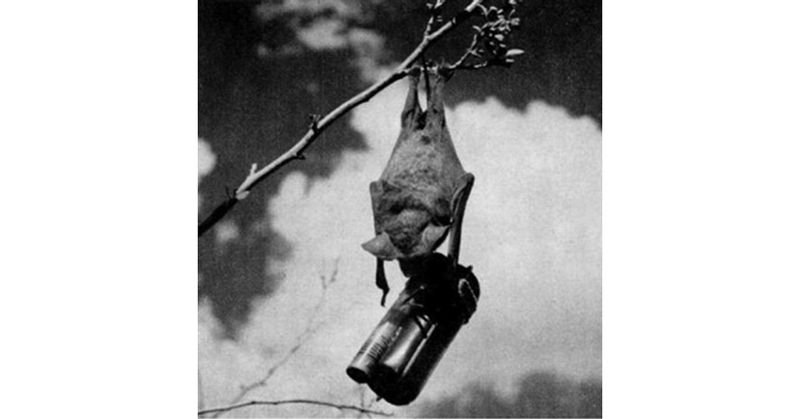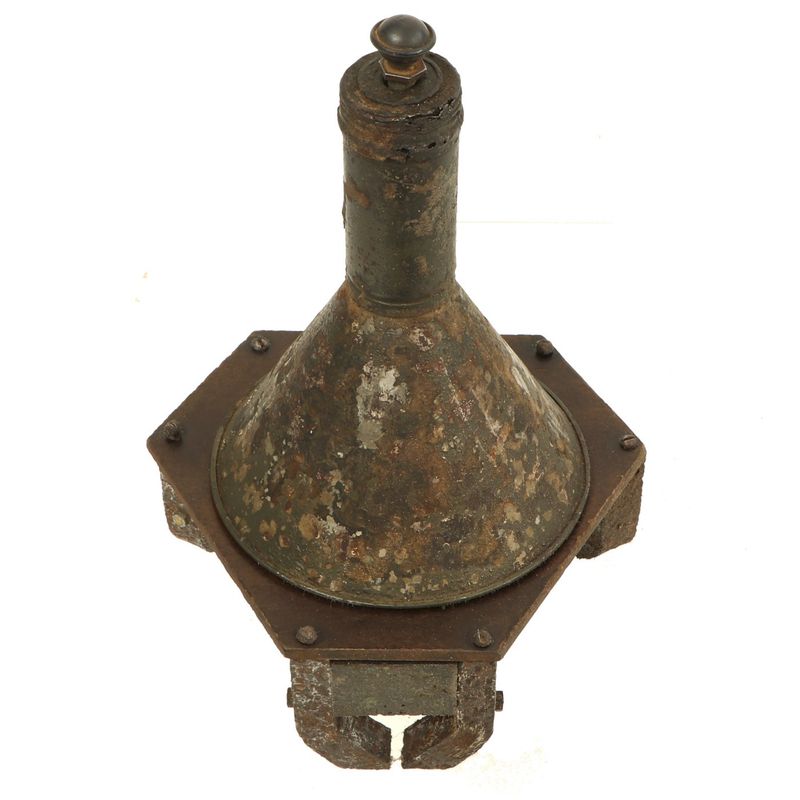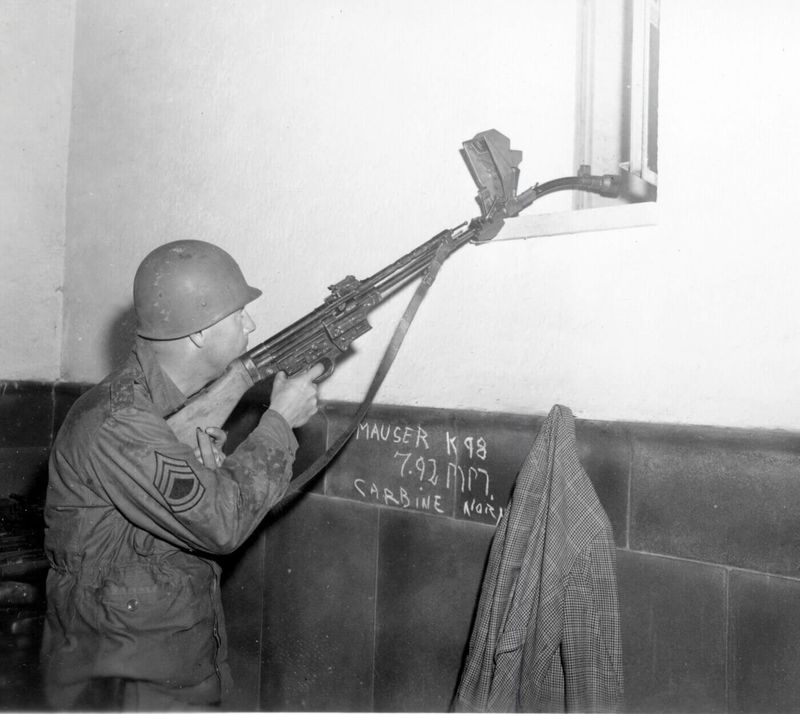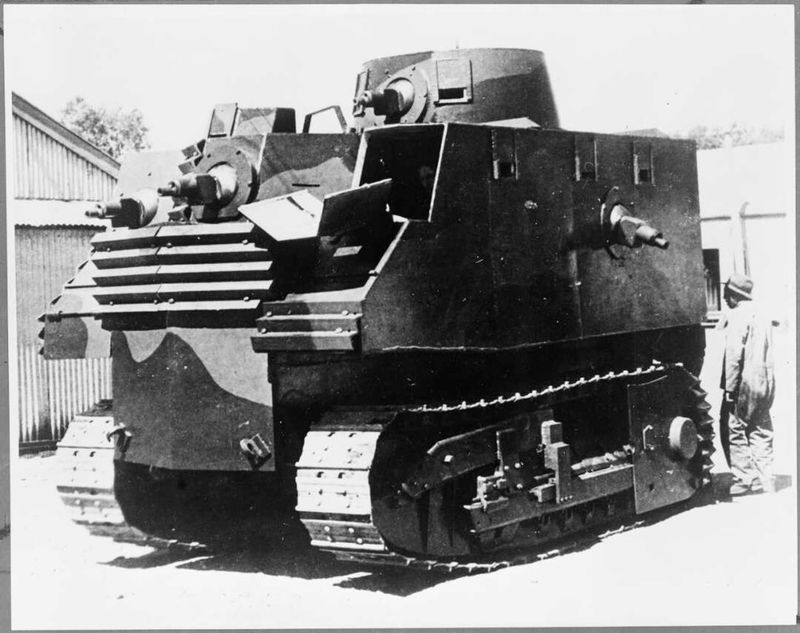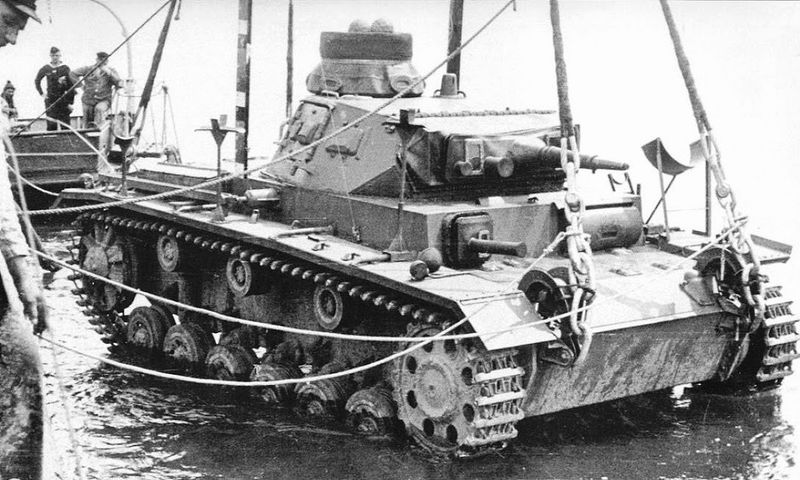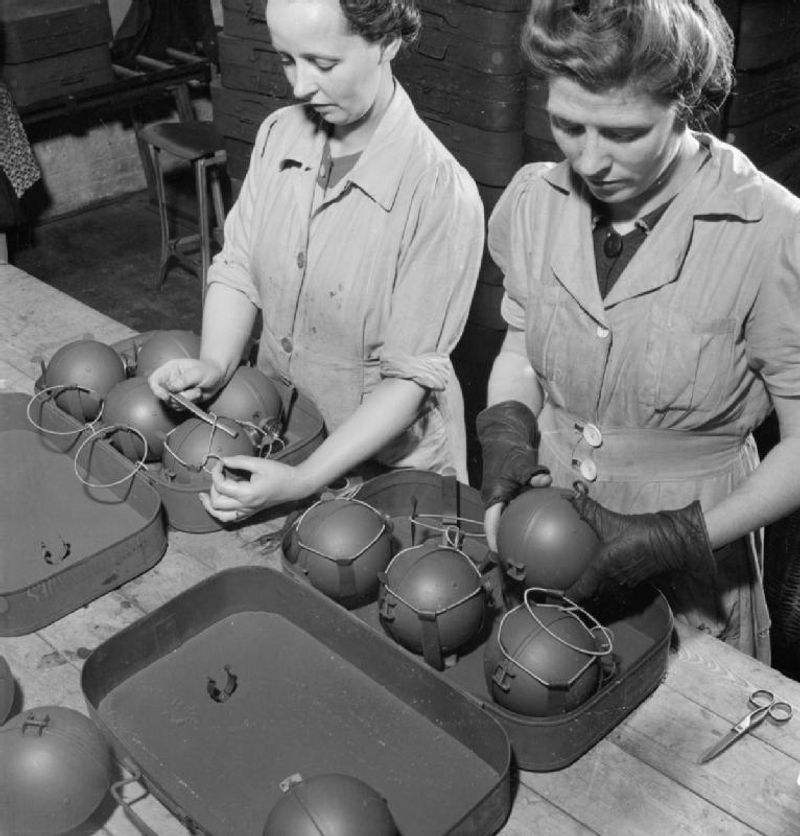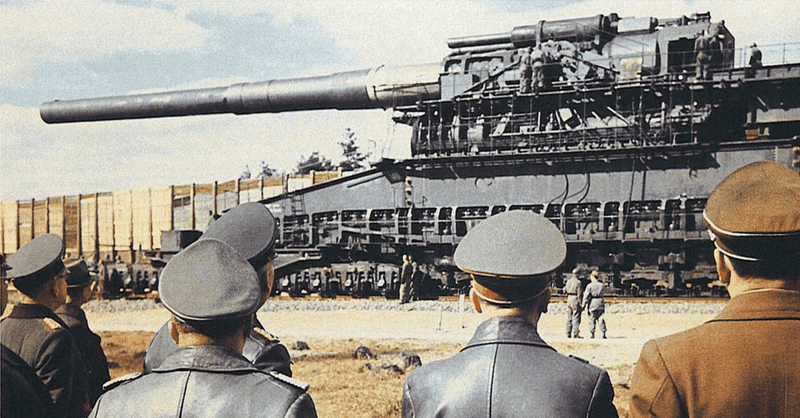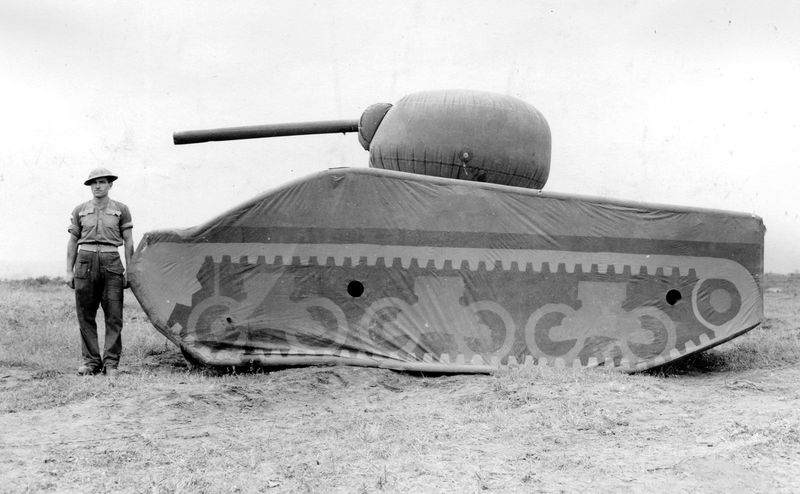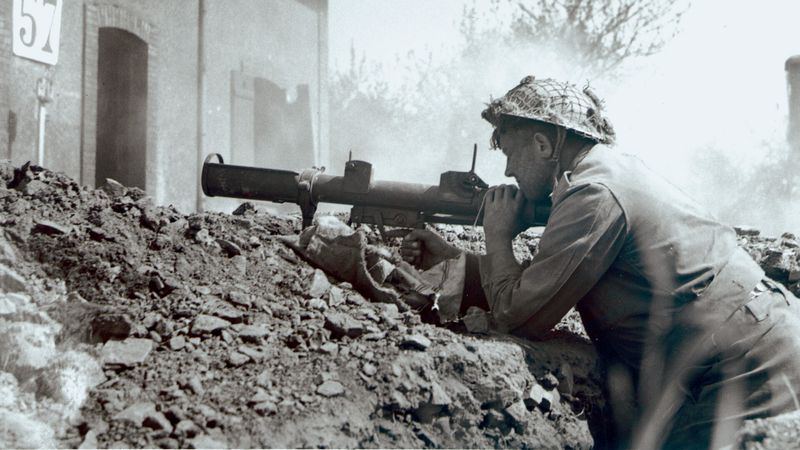World War II saw the creation of some truly bizarre weapons, as both sides sought innovative ways to gain an advantage. While some of these inventions seem outlandish, they surprisingly proved effective in certain situations. Here, we explore ten peculiar weapons from WWII that not only existed but also worked, with one standing out for its shocking effectiveness.
1. The Bat Bomb
In the midst of World War II, the United States developed a peculiar weapon— the Bat Bomb. This unusual invention involved strapping tiny incendiary bombs to bats, releasing them over Japanese cities. The plan was for bats to nest in wooden buildings, igniting them.
In testing, the Bat Bomb showed potential until an unexpected mishap occurred: a bat escaped, setting a U.S. airbase on fire. Despite its odd concept, the weapon surprisingly functioned, demonstrating how unconventional ideas occasionally yield results.
The Bat Bomb remains a testament to wartime creativity and the lengths to which military innovation can stretch.
2. The Great Panjandrum
Created by the British, it consisted of two enormous rocket-propelled wheels with explosives sandwiched between them.
Designed to break through German defenses on D-Day, this bizarre weapon was as unpredictable as it appeared. Though it never saw combat, in theory, it possessed the potential to breach defenses effectively.
The Great Panjandrum showcased the daring and sometimes whimsical ingenuity employed during wartime, highlighting how creativity often intertwines with military strategy in unexpected ways.
3. Hafthohlladung Magnetic Mines
During World War II, German soldiers utilized a particularly daring weapon known as the Hafthohlladung magnetic mine. These handheld mines were designed to be affixed directly to enemy tanks, utilizing powerful magnets.
While exceedingly dangerous for the user, these mines proved highly effective against armored vehicles. Soldiers needed to get up close to affix the mine, an act that required immense bravery but yielded significant results.
This weapon underscored the perilous nature of wartime innovation, where effective solutions often required personal risk and courage in equal measure.
4. The Krummlauf (“Bent Barrel”)
The Krummlauf, a German invention, offered soldiers the ability to shoot around corners—quite literally. This peculiar weapon attachment featured a curved barrel and a periscope sight.
Though effective, it drastically shortened the weapon’s barrel life. Despite this downside, the Krummlauf did provide a tactical advantage in urban warfare, allowing for safer engagement with the enemy.
This ingenious device highlighted the inventive spirit of wartime engineers, who continually sought ways to protect soldiers while maintaining offensive capabilities, even if it meant bending the rules— and the barrel.
5. The Bob Semple Tank
In New Zealand, an unconventional solution to a tank shortage emerged: the Bob Semple Tank. This DIY war machine was built on a tractor frame, clad in corrugated iron sheets.
Despite its comical appearance, the tank could drive, shoot, and technically function as intended. Never seeing combat, it stood as a testament to Kiwi resourcefulness and determination.
The Bob Semple Tank reflected a spirit of ingenuity and improvisation, demonstrating how necessity often drives creative solutions, even if those solutions appear more suited for a parade than a battlefield.
6. The Tauchpanzer (Submersible Tank)
Germany pushed the boundaries of tank design with the Tauchpanzer, a submersible vehicle capable of traversing riverbeds. These waterproofed tanks could be launched from submarines, offering strategic flexibility.
Remarkably, some Tauchpanzers successfully crossed the Seine during early war campaigns, showcasing their effectiveness. This innovative design provided Germany with an edge in certain battlefield scenarios.
The Tauchpanzer highlighted the extreme lengths to which engineers went, crafting machines that redefined traditional combat roles and expanded the tactical possibilities of armored warfare.
7. Sticky Bombs
In desperate times, unconventional solutions often emerge, like the British Sticky Bomb. These grenades were coated in glue, designed to adhere to enemy tanks.
While effective in certain situations, the bombs occasionally stuck to the thrower, creating a perilous predicament. Nevertheless, they were used successfully in dire anti-tank operations.
Sticky Bombs exemplified the risks inherent in innovation, where creative ideas sometimes led to unintended consequences. They remain a quirky footnote in the history of military technology, illustrating the unpredictable nature of wartime invention.
8. The Gustav Railway Gun
The Gustav Railway Gun was a colossal testament to German engineering—a superweapon mounted on rails, capable of firing 7-ton shells over 20 miles.
This 1,350-ton behemoth required a crew of thousands to operate and targeted major installations. Notably, it destroyed a fortress in Sevastopol, proving its destructive capacity.
The Gustav Gun exemplified the scale and ambition of wartime innovations, where size and power often dictated strategic planning. It remains a symbol of the era’s engineering prowess and the pursuit of technological superiority.
9. Operation Fortitude (Fake Army with Inflatable Tanks)
Operation Fortitude was a masterstroke of deception, not a weapon in the traditional sense. This Allied operation created fake radio signals and an army of inflatable tanks to mislead Nazi forces regarding the D-Day invasion site.
This ingenious ruse worked brilliantly, convincing Hitler to hold troops in the wrong locations. Operation Fortitude was a testament to strategic cunning and psychological warfare.
It exemplified how warfare isn’t solely about firepower; sometimes, the most effective weapon is the one that doesn’t fire a single shot, but sows confusion and misdirection instead.
10. The PIAT (Projector, Infantry, Anti Tank)
Among Britain’s arsenal was the PIAT, a peculiar anti-tank weapon. Clunky and awkward, it stood out for its quiet operation and reusability.
Despite its appearance, the PIAT proved effective in taking out heavy armor. Some resourceful soldiers even used it against snipers in buildings, capitalizing on its versatility.
The PIAT highlighted how appearances can be deceiving, with its ungainly look belying a robust functionality. It underscored the importance of adaptability and resourcefulness in wartime, where even the awkward can become assets in skilled hands.
